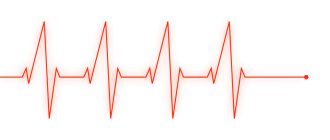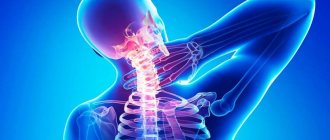What are the benefits of exercise therapy?
Most often, increased ICP is a symptom of serious diseases. To raise intracranial pressure, special conditions are necessary, for example, a sudden increase in the production of cerebrospinal fluid, which accompanies meningitis, encephalitis, and hydrocephalus. Intracranial hypertension is provoked by any lesions of the brain substance:
- injuries;
- tumors;
- strokes;
- abscesses.
To reduce intracranial pressure, inpatient treatment using intramuscular injections, intravenous drips, and medications is indicated. After discharge from the hospital, the patient needs clinical observation in the clinic at the place of residence. During this period, the attending physician may additionally prescribe physiotherapy, herbal remedies, self-massage, and a complex of therapeutic exercises.
Therapeutic exercise is aimed at accelerating circulation, removing congestion in the movement of various fluids in the body. Gymnastics helps reduce increased ICP and pain by improving blood dynamics and accelerating metabolic processes. Therapeutic exercise, consisting of simple elements, is prescribed by a doctor in addition to treatment with medications or for prophylaxis during remission, preventing a rise in intracranial pressure in children and adults.
The therapeutic complex of procedures includes:
- morning exercises (gives vigor and improves mood);
- walking before bed (saturate the body with oxygen and improve blood circulation);
- a special set of movements with increasing load helps reduce ICP.
Return to contents
What exercises are good to do for intracranial pressure?
For increased intracranial pressure, the following are suitable:
- jogging;
- swimming;
- special breathing training;
- tilting and rotating the head;
- walking on all fours;
- stretching;
- body bends.
Return to contents
Tilts and head rotations
Starting position: standing or sitting. Tilt your head smoothly, first down and then up, while touching your chin to your chest; then the head is turned to the left and then to the right, alternately touching the left and right shoulders with the ears. The pace of movement is slow. Sharp intense rotations lead to cervical radiculopathy. Perform 10 times every day, 3 times.
On knees
This task is best performed in specialized physical therapy rooms. For this you will need a gymnastic bench. It is important to maintain balance when performing movements. Get on all fours and walk from the beginning to the end of the bench. At first it is recommended to perform the task 2-3 times, gradually increasing to 10 times. If it is difficult to complete a task, then you can take short breaks.
Set of movements "hedgehog"
Intracranial pressure will help normalize the hedgehog movement complex. The starting position is to lie on your back, covering your knees with your palms. Slowly bring your legs bent at the knees closer to your chest, as if a hedgehog is curling up into a ball. Then, in the reverse order, move your legs away from your chest and take the original position. Slowly raise your arms up and stretch. Initially, the task is performed 3 times, increasing over time to 10 times.
Breathing exercises
Special breathing training is necessary to relieve muscle spasms and reduce high-frequency pressure. Starting position: sit comfortably straight, inhale deeply through your nose. Hold your breath for 2-3 seconds. Curl your lips into a tube and exhale the air smoothly. It is advisable to perform it for 1 to 5 minutes, avoiding disruption of the respiratory rhythm.
Other exercises
In addition to the above training, the following manipulations will be useful:
- Starting position - sitting or standing straight, raise your shoulders, pull your head into your shoulders, stay in this position for 2-3 seconds, take the original position (20 times).
- Close eyes. Move your eyes left to right (20 times).
- Sit on the mat, take a breath. As you exhale, reach your toes with your hands (palms up) (40 times).
Return to contents
Relaxation after training
Relaxation
Relax after all the neck exercises. As you exhale, pull your shoulders towards your ears and lower them, and so on several times. Make a series of head tilts forward, reaching your chin to the sternum, and bends back, bringing your shoulder blades together. That's it, the head massage is over.
⚠️ The information in the article is for educational purposes only. All your actions must be coordinated with your doctor or other specialist at your local clinic!
Good health to you, dear readers!
Yandex.Zen channel
Head massage for ICP
Only a doctor can determine the severity of the condition and prescribe proper treatment. A procedure such as massage should be carried out by a qualified specialist. It is necessary to learn the basic movements and execution methods at the initial stage. Then you can perform self-massage at home. Standardly, with increased high-frequency pressure in adults, the massage therapist kneads the back of the head (if a headache occurs in the temple area, then rubbing in this area is necessary). When performing self-massage, it is convenient to place your palms on the top of your head and move the thumbs of both hands from the back of your head to your neck. The procedure is allowed to be performed daily. In addition to reducing headaches, the normal movement of cerebrospinal fluid (CSF) is stimulated.
To effectively combat high HF pressure, craniosacral therapy is used. This is manual therapy consisting of soft, light rubbing. The specialist performs various manipulations, including pressing on certain points of the head and neck, as a result of which headaches disappear, nerve function is normalized, and the general condition improves. The duration of the massage is from 30 minutes to 1 hour.
Do not forget about a balanced diet, if possible, eat dried fruits, it is advisable to limit the intake of fatty, salty, spicy foods. People with such a symptom as increased intracranial pressure should be wary of climate change, avoid stressful situations, overwork, refuse saunas, steam baths, they need a sleep and rest schedule.
Gymnastics for the treatment and prevention of intracranial pressure
Intracranial pressure is an indicator that characterizes the force of cerebrospinal fluid pressure on brain tissue. Its increase indicates congenital or acquired pathologies; fluid pressure has a depressing effect on the brain matter and poses a threat to the patient’s life. Therefore, it is necessary to promptly find the cause of intracranial hypertension in order to choose an effective treatment method and thereby prevent the development of dangerous symptoms. Below we will look at gymnastics to reduce intracranial pressure as one of the effective methods of treatment.
about the problem
Intracranial pressure (ICP, intracranial hypertension) is an increase in pressure in the cranial cavity.
Inside the skull there is a liquid (cerebrospinal fluid), which is formed from arterial blood and washes the brain, circulating through special liquor pathways, then is reabsorbed into the bloodstream.
Increased pressure inside the skull occurs when there is more cerebrospinal fluid in the skull than normal. Excess cerebrospinal fluid is formed when its production is increased, or when there are obstacles to its free outflow.
The outflow of cerebrospinal fluid is hampered due to stagnation in the veins of the head and spine, where it should normally be absorbed. Accumulating in the cranial cavity, cerebrospinal fluid puts pressure on the soft tissues of the brain.
The cause of cerebrospinal fluid retention is often spasmed neck muscles and displaced cervical vertebrae, which compress the vessels that ensure the outflow of blood and cerebrospinal fluid from the cranial cavity. Muscle spasm and displacement of the vertebrae occurs with various injuries to the neck and head, most often birth injuries (subluxation of the atlas), cervical osteochondrosis.
In a child, symptoms of intracranial pressure (ICP) after a birth injury may appear and increase gradually several months after birth. The baby develops: anxiety, sleep disturbances, increased sweating, an unreasonable rise in temperature and shuddering. The child may “goggle” his eyes, or a slight squint may appear. With anxiety, there is trembling of the chin and arms, blueness or redness of the head or sharp marbling of the skin, and sometimes a short-term cessation of breathing occurs. During sleep, the child throws his head back, falls asleep better and sleeps in his arms, rubs his head or rocks it back and forth.
An adult with intracranial pressure may be bothered by: headaches; short-term and mild dizziness; frequent vomiting that does not bring relief; intraocular pressure; decreased vision; feeling of a “heavy” head; constant fatigue; congestion or noise in the ears; hearing loss; irritability; depressive states.
Long-term intracranial pressure over the years leads to atrophy of the cerebral cortex and severe dysfunction of the central nervous system.
Reasons for increased ICP
The main cause of intracranial hypertension is a dysfunction of the cerebrospinal fluid system, in which cerebrospinal fluid is released in excess, is slowly absorbed into the brain tissue, or poorly circulates through the spinal vessels due to their low tone.
There are many reasons that cause dysfunction of the cerebrospinal fluid system and increased ICP:
- congenital brain pathologies; birth injuries; TBI; brain infection (encephalitis, meningitis); cervical osteochondrosis; hydrocephalus; oncological diseases, hematomas and abscesses of brain tissue.
If acute symptoms of intracranial hypertension occur and its cause is identified, the patient is prescribed treatment and preventive measures are prescribed to increase the period of remission.
our treatment
Our center provides treatment aimed at eliminating the causes that lead to increased intracranial pressure.
We eliminate spasms of the neck muscles, realign displaced cervical vertebrae, and restore the normal outflow of venous blood and cerebrospinal fluid from the cranial cavity.
Effective treatment methods have been developed for all age groups.
Children receive specialized treatment using a patented orthopedic product (Patent No. 2587960).
To eliminate ICP in adults after injuries to the skull and cervical spine, after head contusions and concussions, or in the presence of osteochondrosis, we use our own patented treatment method (Patent No. 2571234).
If necessary, osteopathic sessions are prescribed to restore correct biomechanics in the cervical spine.
Treatment options for intracranial hypertension
With increased ICP, it is extremely important to start treatment in a timely manner to prevent the pressure of the cerebellar fluid on the cerebellum and the development of life-threatening pathologies. In accordance with the diagnosis, age and condition of the patient, a highly specialized specialist prescribes one or more treatment methods:
- Drug therapy. To reduce the production of cerebrospinal fluid and reduce its pressure on the brain, the patient is prescribed a complex of drugs: diuretics, neuroprotective, glucocorticosteroids, nootropic and sedative drugs, as well as injections or tablets that increase vascular tone. Surgery. If ICP is high and drug treatment fails, the patient undergoes one of the following operations: bypass surgery, endoscopy, decompression craniotomy, or ventricular puncture, which involves pumping out accumulated fluid. Physiotherapy. It is an auxiliary treatment method that complements drug therapy. A number of procedures are prescribed by the doctor in accordance with the indications. Folk remedies. They are used as adjuncts to drug treatment or to prevent exacerbations and increased brain pressure during remission. Folk remedies include herbal decoctions, tinctures, inhalations and aromatherapy. Unconventional treatment. Includes the use of acupuncture, manual therapy, hydrotherapy, and homeopathy. In a specific situation, the attending physician decides on the advisability of carrying out these procedures and the choice of treatment method - auxiliary or alternative. Therapeutic exercises to reduce intracranial pressure. A set of specially designed exercises helps reduce ICP and pain by improving blood circulation through the venous vessels. The doctor may prescribe therapeutic exercises consisting of simple elements in addition to drug therapy, instead of certain medications, or as a preventive measure that prolongs the period of remission and prevents increases in brain pressure.
Treatment of intracranial hypertension, regardless of its cause, requires an integrated approach, so the doctor, in accordance with the diagnosis, selects the most effective methods and forms them into a single technique.
Gymnastics for the treatment of intracranial pressure
Therapeutic exercises for ICP can act as both an alternative to some medications for drug treatment, and an effective preventive measure to reduce the risk of attacks. Depending on the diagnosis, the doctor selects techniques that are aimed at normalizing ICP, alleviating the general condition and reducing headaches.
The most common exercises in therapeutic exercises for intracranial hypertension:
- Using smooth movements, tilt your head to the right and left, touching your ears to your shoulders, forward and back, pulling your chin to your chest. After this, you should slowly rotate your head in both directions. Each element of the exercise is performed on average 20 times. In the first days, pain may occur due to tension in the neck muscles, but subsequently, when performing this exercise, the discomfort will disappear.
- Place both hands behind the neck and clasp the lower part of the back of the head with them so that the thumbs are on the neck muscles located at the level of the earlobes. After this, you need to run your fingers up and down over the neck muscles for 15 minutes to provoke the outflow of blood from the brain. This exercise allows you to feel instant relief in your temples and back of your head.
- Take a small round stick in both hands, place it behind your head, and with light pressure for 15 minutes, move it from the lower part of the back of the head along the neck muscles located to the right and left of the vertebrae, and back.
- Do slow stretches every morning and evening to activate muscle function throughout the body and normalize blood circulation.
- To reduce ICP and headaches, perform breathing exercises. To do this, you need to sit up straight, inhale through your nose, and hold your breath for a few seconds. Exhale slowly through pursed lips. The duration of the exercise is several minutes, and you need to carefully observe your own sensations.
Cranial therapy
In the treatment of ICP, cranial therapy is considered one of the most effective types of alternative medicine. Despite the fact that the bones of the skull of an adult are fused, they have elastic sutures, due to which their amplitude movement occurs. Violation of their mobility leads to tension in the lining of the brain and, as a consequence, the development of intracranial hypertension as a symptom of pathological processes.
The technique of cranial therapy involves diagnosing the condition of the sutures and the location of the bones of the skull, the symmetry of both of its parts, and subsequent treatment if their mobility is impaired.
A session lasting from 30 to 60 minutes is conducted by a chiropractor. By placing the palms of his hands on the patient’s head, the specialist studies his cranial rhythm and, with soft, gentle movements, normalizes the tense tissues. For this, the most effective unfolding technique is used. The procedure resembles a light and pleasant stroking of the head, from which the patient feels relief and relaxes so much that he can fall asleep.
Cranial therapy can reduce intracranial hypertension by improving the circulation of cerebrospinal fluid, get rid of attacks of severe headaches, normalize blood circulation throughout the body and alleviate post-traumatic conditions associated with the brain. The procedure is painless, does not cause complications or side effects, therefore, after consultation with a doctor, it can be prescribed to both adults and children.
Describe your problem to us, or share your life experience in treating the disease, or ask for advice! Tell us about yourself right here on the site. Your problem will not go unnoticed, and your experience will help someone! Write >>
Cranial therapy is not recommended for patients with infectious diseases, acute thrombosis, aneurysms or malignant tumors.
The information on the site is created for those who need a qualified specialist, without disturbing the usual rhythm of their own lives.
Prevention of intracranial pressure with gymnastics - what the doctor didn’t tell you
The brain is located in a special liquid environment called the fluid space or cerebrospinal fluid. Inside it contains cavities - ventricles, through which this cerebrospinal fluid regularly circulates. The cerebrospinal fluid is under pressure, which is why when it begins to put pressure on the brain, intracranial pressure occurs.
Various gymnastic exercises can be done independently
For the brain to function properly, it requires normal pressure, but due to destabilization of the cerebrospinal fluid, a person begins to experience headaches. Low and high intracranial pressure can occur in adults and children. The difficulty is that it is almost impossible to install it at home, because a headache can start due to many reasons.
With any illness, a serious disease is formed, called either intracranial hypertension or hypotension. Both have unpleasant consequences. With normal pressure in the brain, the vessels are in good shape and are able to regulate blood flow. Otherwise, due to their narrowing or expansion, the patient may experience strong pulsation in the head.
REPLACEMENT HYDROCEPHALUS
The terms “replacement hydrocephalus” and ex-vacuo hydrocephalus denote expansion of the ventricles of the brain of a secondary nature, due to brain atrophy - a decrease in the volume of brain tissue. Replacement hydrocephalus is not accompanied by disturbances in cerebrospinal fluid dynamics, including increased intracranial pressure. Therefore, the relationship of this condition to hydrocephalus is disputed. Replacement hydrocephalus is more often encountered in elderly patients with chronic vascular and/or toxic damage to the brain, consequences of traumatic brain injury. In the last two cases, a selective decrease in the volume of individual brain regions is possible: atrophy of the cerebellum and frontal lobes, atrophy of brain regions in the projection of the bruise. Replacement hydrocephalus does not have a clear correlation with neurological disorders and does not require special treatment.
Against the background of terminological disagreements on the issue, there are several classifications that do not contradict each other:
- communicating and non-communicating;
- obstructive and aresorptive;
- congenital and acquired;
- genetic or associated with malformations of the central nervous system;
- isolated intraventricular-obstructive and extraventricular simple and complicated.
The term “compensated hydrocephalus” describes conditions without progressive enlargement of the ventricles of the brain; otherwise, uncompensated hydrocephalus is diagnosed. “External hydrocephalus” or “benign enlargement of the subarachnoid spaces” is an excessive accumulation of fluid, a condition quite often associated with familial macrocephaly (the size of the skull is larger than the size of the brain, while there are no disturbances in cerebrospinal fluid dynamics, including increased CSF pressure).
- The term "hydrocephalus" is used to refer to a group of conditions that are distinguishable from each other by CT or MRI of the brain.
- Judging hydrocephalus without CT or MRI data may be erroneous.
- In children, hydrocephalus is usually associated with increased intracranial pressure (ICP). In most cases, it is caused by excess production of CSF, which accumulates in the ventricles of the brain due to disturbances in its circulation (obstructive or non-communicating hydrocephalus). Less commonly, CSF accumulates due to malabsorption (communicating hydrocephalus).
- In adults, unlike children, forms of hydrocephalus without increased ICP are much more common.
- Since hydrocephalus can not only be an isolated condition, but also accompanies certain neurological diseases, the exact prevalence of the syndrome is not known.
- To date, no unified classification has been created that covers the causes of hydrocephalus in patients of different ages.
- Due to the high “stigmatizing” significance of the diagnosis of “hydrocephalus” for patients, before announcing the final diagnosis and prescribing treatment, it is necessary to conduct all the studies necessary to establish the nosological affiliation of the changes identified in the brain.
- The patient must have complete and adequate information about the disease, which is most important in relation to benign and treatable forms.
Causes of increased pressure
When a headache occurs, the patient takes a painkiller, and if it works, the illness is successfully forgotten. However, this is a fundamentally wrong action, since it is important to establish the cause of the headache. In most cases, it is caused by increased intracranial pressure when there is an excess of cerebrospinal fluid (CSF). The reasons for this phenomenon include:
- consequence of head injury;
- constriction of blood vessels in the brain;
- impaired circulation of cerebrospinal fluid;
- inflammation of the brain;
- taking potent hormonal drugs;
- hydrocephalus.
The last point can be noted additionally. When intracranial pressure is elevated for a long time, the cerebral ventricles greatly expand, which leads to hydrocephalus - dropsy. The skull has a closed shape, so the expansion of the ventricle is carried out due to the contraction of the medulla. This is what has serious consequences.
Causes and consequences of increased intracranial pressure
The reasons we find most often:
- disruption of the outflow of venous blood from the cranial cavity
- hypoxia (oxygen starvation)
- suffered a traumatic brain injury (even a very old one, up to birth trauma)
- meningitis or encephalitis
- congenital structural features of the central nervous system (Arnold-Chiari anomaly, congenital intracranial hypertension, etc.);
- poisoning with brain damage.
Consequences As a result of the disease, brain cells are gradually destroyed, and their place is filled with fluid. The functions of systems controlled by the brain become disordered, and complete or partial loss of vision, hearing, memory, potency, miscarriage, depression, nervous exhaustion and other health problems may occur.
On the left is a normal brain, the liquid (cerebrospinal fluid) is indicated in white. On the right is untreated internal hydrocephalus: brain atrophy, almost the entire cranial cavity is occupied by fluid.
Symptoms and diagnosis
This phenomenon is often accompanied by the following symptoms:
- “Heavy” headache in the morning, often developing into an unpleasant throbbing.
- Fast fatiguability.
- State of fainting.
- Dizziness and poor coordination.
- Frequent heartbeat.
- High blood pressure.
- Dark circles under the eyes.
- Nausea, urge to vomit.
- A sharp deterioration in condition when weather conditions change.
- Nervousness.
Since intracranial pressure may be caused by some disease, it is worth noting that if one of the signs is observed, coupled with an increase in temperature (more than 38 degrees) and clouding of consciousness, then most likely these are the consequences of meningitis.
Symptoms of increased intracranial pressure
Increased pressure on the brain substance can disrupt the functioning of the central nervous system. Hence the characteristic symptoms:
- Heaviness in the head or headaches that increase in the morning or in the second half of the night;
- In severe cases, nausea and/or vomiting in the morning may occur;
- Vegetative-vascular dystonia (sweating, a drop or increase in blood pressure, palpitations, lightheadedness, etc.) is an almost obligatory symptom;
- Fatigue, “dullness”, easy exhaustion during work or study loads;
- Nervousness;
- “Bruises” under gases (if you stretch the skin under the eyes in the area of the “bruise”, dilated small veins are visible);
- Possible decrease in sexual desire and potency;
- If the human body is in a horizontal position, cerebrospinal fluid is released more actively and absorbed more slowly, so intracranial pressure and its symptoms tend to peak in the second half of the night or in the morning;
- The lower the atmospheric pressure, the higher the intracranial pressure, so the deterioration of the condition is associated with changes in weather.
Exercises
How to relieve intracranial pressure at home?
“By following a special technique, you can achieve positive results within a week. All elements of gymnastics should be done very carefully! No sudden movements, jerks or turns. Only neat and smooth movements.”
In some cases, you can ask another person to do certain movements for greater effect:
- Cervical massage: in the lower part of the back of the head (approximately at the level of the earlobes) there are two small bulges. You can feel them, clasp the back of your head with both hands. Your thumbs will rest against these neck muscles. You need to move your thumbs from top to bottom along the bulges for 15 minutes. You will immediately feel lightness in the back of your head and temporal lobes. This is caused by blood flowing away from the brain.
- Bend-overs: These exercises should be done as often as possible. At first it will be difficult, but soon, when the muscles are well warmed up, the movements will seem easy. It is necessary to alternately tilt the head back and forth, left and right. It is advisable to touch your chin to your chest and your ears to your shoulders. Each tilt is done slowly, without jerking. Enough 20 times per side. It is also necessary to do rotations in different directions.
- Massage with a stick: for this exercise you will need a rolling pin or any short round stick. Holding with both hands, you need to move the stick from top to bottom along the neck. You should start from the end of the head to the first protruding vertebra.
- Walking on all fours: This is a physical therapy exercise. Standing on all fours, you need to walk on a narrow bench for 10 minutes. You can lay a narrow (no more than 30 cm) path on the floor and try not to go beyond.
- Breathing exercises: proper breathing can relieve pain (during childbirth or strenuous exercise), muscle spasms, and also normalize intracranial pressure. Sitting straight, you need to take a deep breath and hold your breath for a couple of seconds. Then exhale slowly through your lips with a straw. It turns out to be a slight whistle. You should be extremely careful with breathing exercises. 2-3 minutes of exercise is enough.
- Stretching: Every morning and before bed, you need to stretch your muscles thoroughly. This will improve blood circulation throughout the body.
start of treatment
Treatment of intracranial pressure in our center begins with an appointment with a vertebroneurologist. The initial appointment is conducted by the candidate of medical sciences, chief medical doctor Lyudmila Ivanovna Mazheiko.
At the appointment, the vertebroneurologist will examine the cervical spine and determine the tone of the cervical muscles, and, if necessary, prescribe additional examinations (ultrasound, TCD, MRI, CT, EEG, M-Echo, in children under 1 year of age, NSG, fundus examination).
Based on the examination results, the doctor will develop an individual treatment plan.
Appointments with a vertebroneurologist are carried out by appointment. To begin treatment, make an appointment.
Cranial therapy
Cranial therapy is a type of alternative medicine that is aimed at reducing intracranial pressure. The therapy has a unique technique: thanks to a special effect on the cranial bones, the regulation of the cerebrospinal fluid is normalized, and the blood flow is stabilized.
Cranial therapy consists of several special techniques. For example, the popular “unfolding” is aimed at relaxing soft tissues. After it, the patient plunges into a state of relaxation and enjoys lightness in the head area. This therapy is very effective and absolutely safe. It is carried out only in specialized centers. But that is another story.










